Seashore Foraging: A Beginner's Guide to Finding and Harvesting Edibles from the Coastline
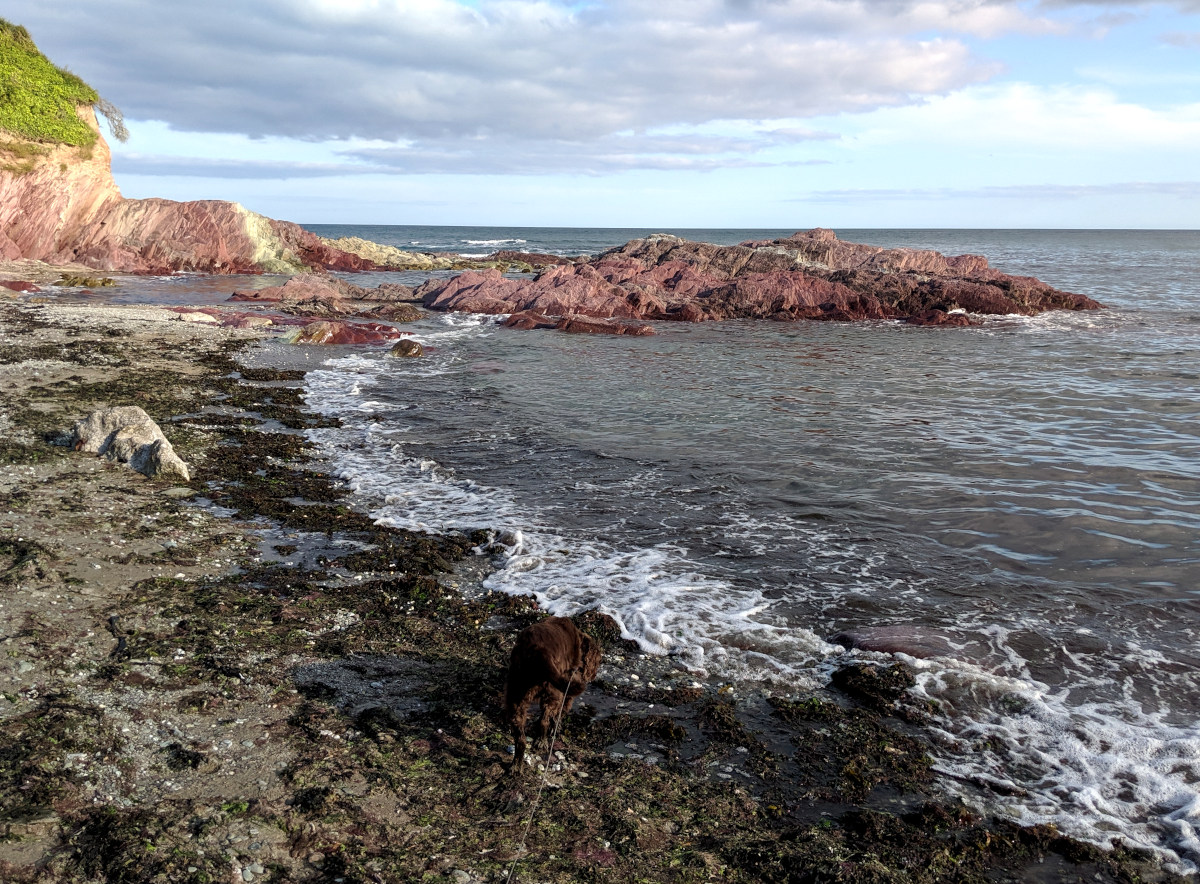
Foraging on the seashore refers to the practice of searching for and gathering food from the inter-tidal zone, the area of the beach that is exposed at low tide and covered by water at high tide.
Table of Contents
Do your research
Before you head out to the beach, it is important to do your research and learn about the plants and animals that are edible in your area. There are many resources available online and in libraries that can help you with this.
Foragers typically collect a variety of seafood such as clams, mussels, crabs, and fish, as well as edible seaweed and other marine plants.
Below: A scallop I found foraging recently.
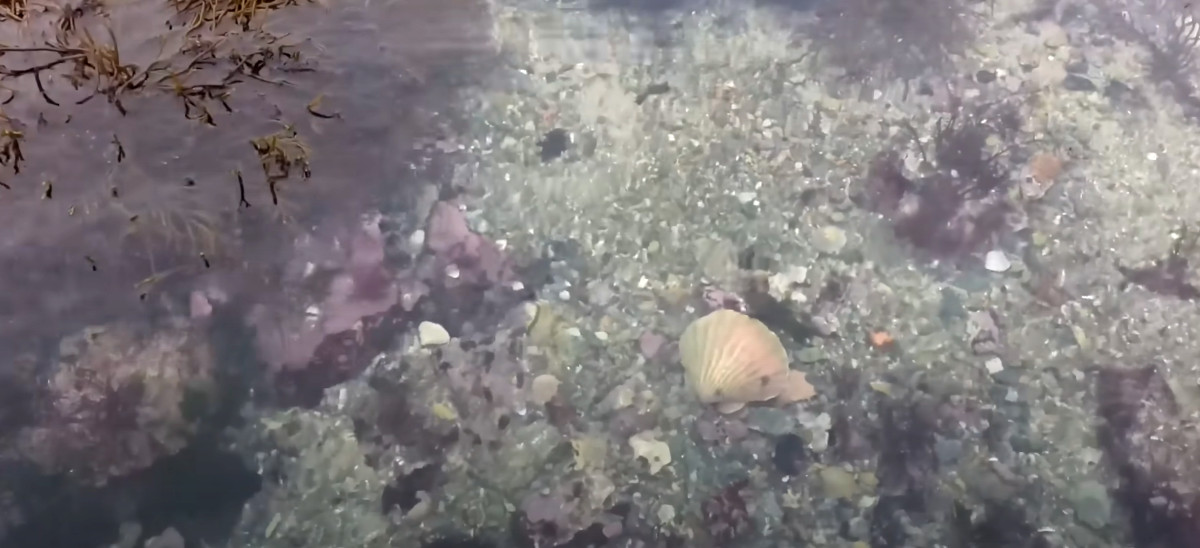
Size limits often apply to fish and crustaceans and taking undersized lobster, crabs and fish is against the law and irresponsible.
Leave the small ones to become big ones.
Keep a record of where the best places are so you can go back.
Choose the right time and place.
The best time to go rock pooling or sea shore foraging is at low tide, when you will have access to the most plants and animals. It is also important to choose a safe and clean beach to forage at.
I like to get to my chosen foraging spot around 2 hours before low tide, this means I can take advantage and maximise the time I spend foraging at slack water.
Spring tides are the best time to go coastal foraging, the sea will be lower than normal at low tide and you will have access to more variety and larger specimens that you would normally.
Below: Rock pools like this one trap fish and crustaceans.
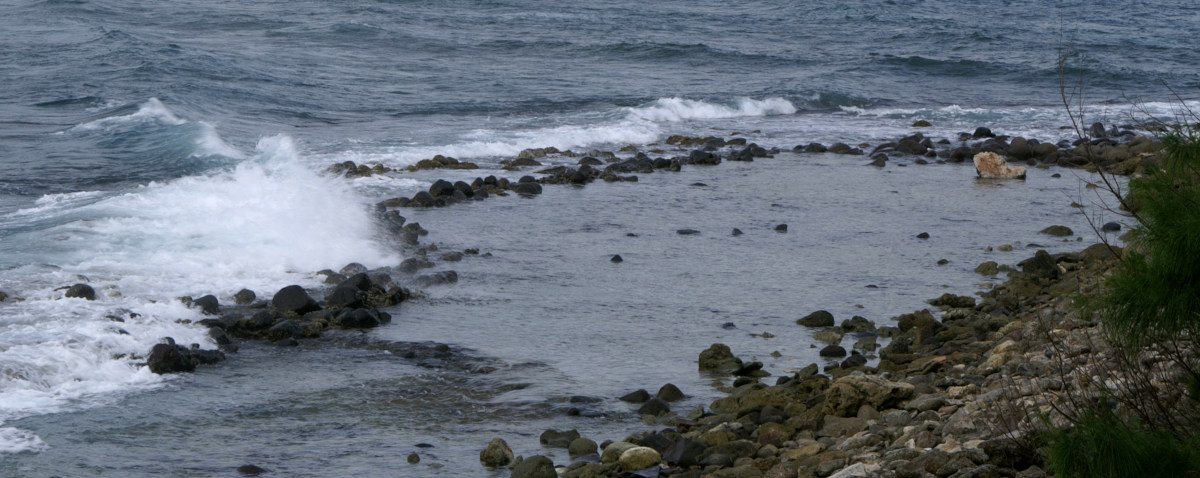
Foraging on the seashore requires a certain level of knowledge and skill, as well as an understanding of local regulations and safety considerations. It is important to be aware of the tidal patterns and to only collect species that are legal to harvest and safe to eat.
I prefer rocky over sandy areas as crab and lobster tend to hide under rocks.
Be prepared.
When you go sea shore foraging, it is important to be prepared. Bring a bucket, a knife, and a field guide with you. You should also wear comfortable shoes and clothing that you don't mind getting wet.
Remember to never turn your back on the sea, that way you will never be caught out by a freak wave or incoming tide.
Below: Some seaweed can be eaten and it makes excellent fertiliser and soil conditioner in the garden.
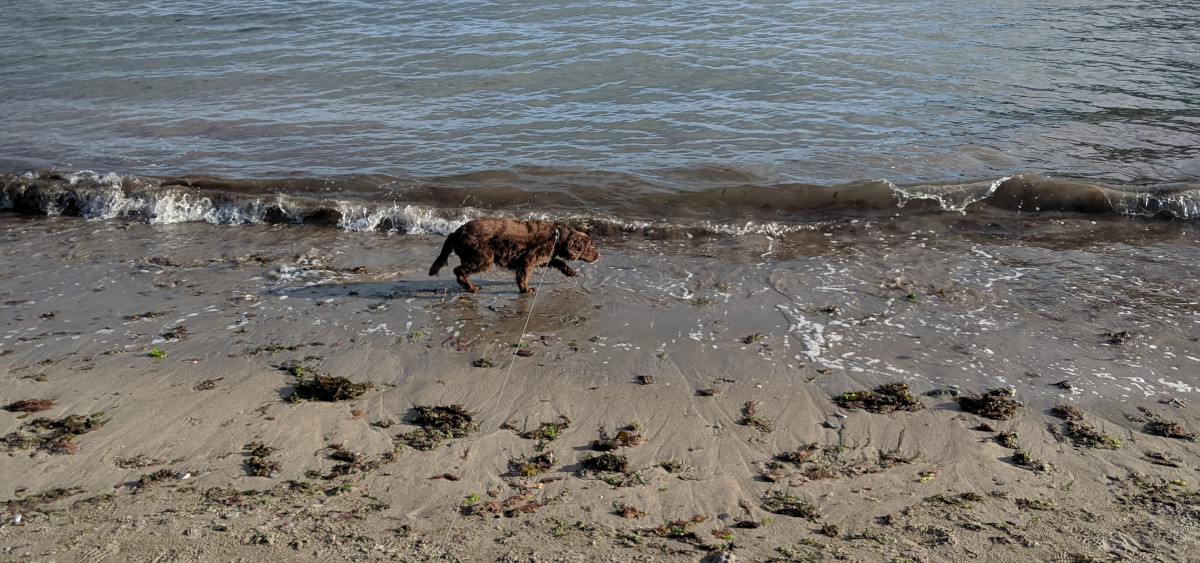
Many coastal areas have rules and regulations in place to protect the marine environment and ensure sustainable harvesting practices.
Be respectful
When you are sea shore foraging, it is important to be respectful of the environment. Only take what you need and don't disturb the plants and animals that you are foraging for.
Take care as anything with pincers can do a lot of damage to hands and fingers, some fish and eels bite and some have very sharp spines.
Below: Seaweed is useful and edible but not all taste nice. Pepper Dulse is a favourite of mine.
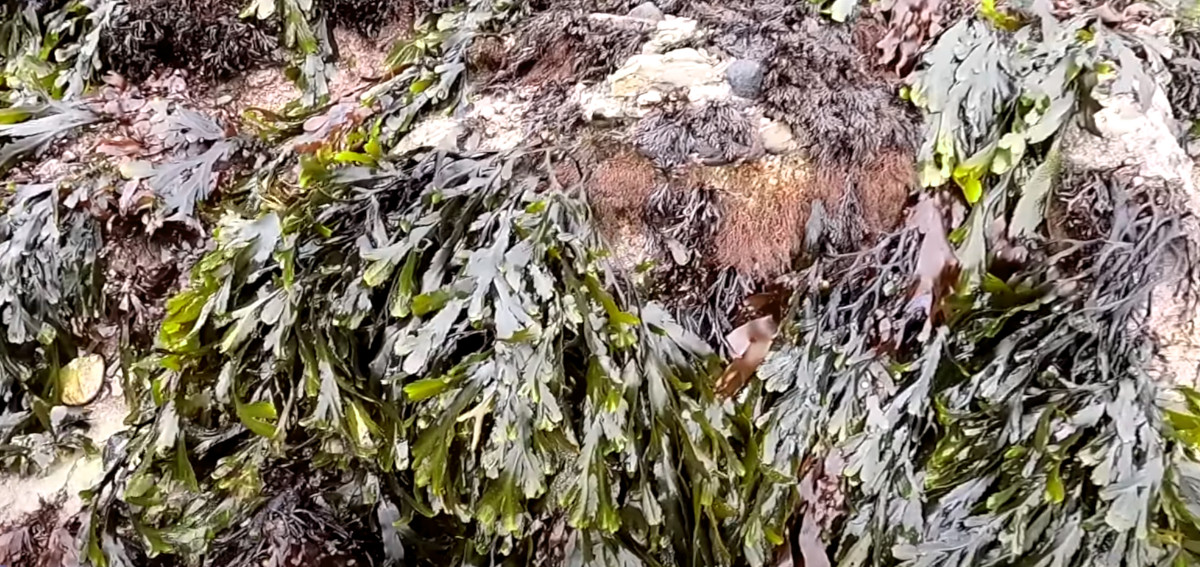
Foragers should also be mindful of their impact on the ecosystem and avoid over-harvesting any particular species. It is also important to properly clean and prepare the food before consuming it, as some species may be contaminated with harmful bacteria or toxins.
Have fun!
Sea shore foraging can be a great way to get some exercise, enjoy the outdoors, and learn about the natural world. So go out there and have some fun!
Below: Birds like herons can show you good places to forage for food on the sea shore.
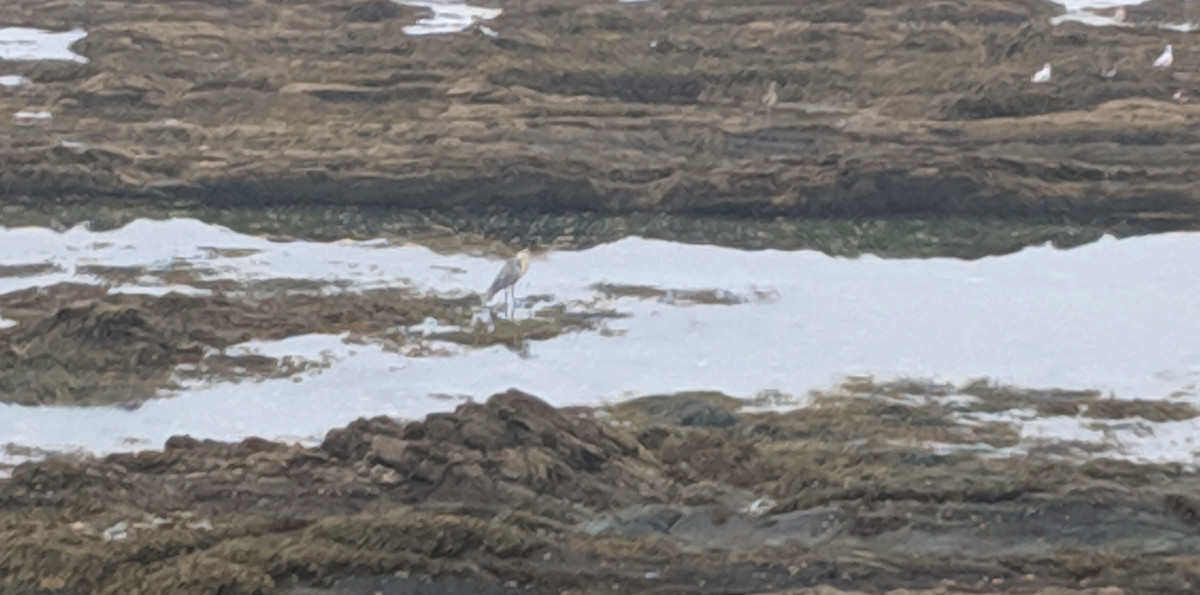
Overall, foraging on the seashore can be a fun and rewarding experience for those who enjoy exploring the natural world and gathering their own food. However, it is important to do so responsibly and with a deep respect for the fragile ecosystem of the inter-tidal zone.
Table of common sea shore edibles:
Here is a table of some common types of edible sea shore forage and the best times to find them:
| Type of Sea Shore Forage | Best Time to Forage |
|---|---|
| Mussels | All year round |
| Cockles | All year round |
| Razor clams | Autumn/Spring |
| Oysters | Autumn/Spring |
| Limpets | All year round |
| Periwinkles | All year round |
| Sea Beet | Spring/Summer |
| Sea Purslane | Summer |
| Samphire | Summer |
| Sea Kale | Spring/Summer |
| Sea Aster | Summer |
| Sea Buckthorn | Autumn |
| Dulse | All year round |
| Carrageen | All year round |
Please note that the availability of these forageables may vary depending on location, local regulations and environmental factors.
It's always important to properly identify anything you forage before consuming it and to ensure that the area where you're collecting from is free from pollutants or other contaminants like algal blooms.
Below: A good size lobster found under a rock at low tide.
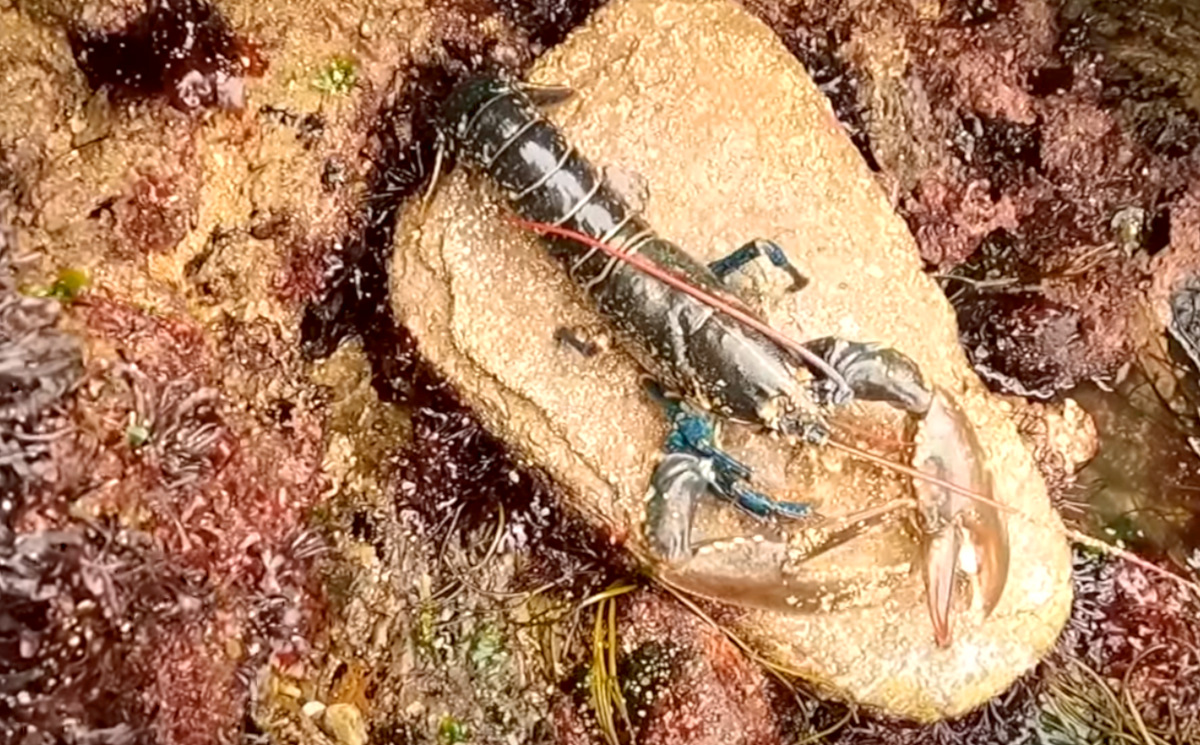
During an algal bloom, large quantities of algae may release toxins into the water, which can be absorbed by shellfish through their gills or by filter feeding. These toxins can accumulate in the tissues of the shellfish and make them dangerous to consume. In some cases, consuming contaminated shellfish can cause serious illness or even death in humans.
To prevent the spread of toxins, shellfish harvesting may be restricted or banned during an algal bloom. Monitoring programs are put in place to test shellfish for the presence of toxins before they can be sold or consumed.
Here are some additional tips for beginners foraging on the shore:
- Start with easy-to-identify plants, such as seaweeds and shellfish.
- Be sure to cook any plants you forage before eating them.
- Never eat anything that you are not sure is edible.
- If you are unsure about a plant or animal, it is always best to err on the side of caution and not eat it.
- Be sure to bring plenty of water and snacks with you when you go sea shore foraging.
- Wear sunscreen, a hat, and sunglasses to protect yourself from the sun.
- Be sure to tell someone where you are going and when you expect to be back.
- Have fun and enjoy the experience!
